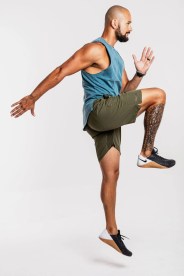The old adage “When the going gets tough, the tough get going” is true about winter runners. While others head inside to indoor tracks and treadmills, those loyal to the outdoors don’t let freezing temperatures, zero daylight and the threat of catching a cold scare them away. “I’ve been running through Minnesota winters for close to 40 years now,” says Dr. Robert Johnson, MD Professor in the Department of Family Medicine and Community Health at the University of Minnesota. “I’ve run in temperatures as low as 20 degrees Fahrenheit below zero — 77 degrees Fahrenheit below with windchill — and I’ve survived.”
Dr. Johnson says that there is no known evidence that running in the cold has an adverse affect on the immune system. In fact, getting outside in the cold weather can actually stimulate your immune system. The real threat is not dressing properly. When layering, there are two main body parts you want to protect. The first is the head. A lot of blood naturally flows to the head and, in turn, a lot of heat can be lost if it’s not properly covered. The other body part to protect is the trunk, i.e., the chest and torso.
When the body’s trunk is cold, the blood vessels in the periphery constrict, making those areas more susceptible to the cold. “So the trick to keeping fingers and toes warm is to obviously cover them,” says Dr. Johnson. “But you also want to make sure there’s an extra layer over the torso so that the body doesn’t get hypothermia.”
What about that runny nose you get running in the cold? The common perception is that this means you’re sick, but Dr. Johnson says that it’s actually cold-induced rhinorrhea. The body naturally produces more mucous to warm and humidify the air we breathe. “People worry about frostbite of the lung but it doesn’t really happen because our respiratory system is so efficient,” says Dr. Johnson. When we exhale, the warm air combines with the cold air outside, condenses, and causes further mucous buildup around the nose.
One of the main factors that determine whether you can run in the cold, and be healthy, is intelligence. Of course, winter runners should wear reflective clothing (Dr. Johnson suggests a headlamp) and running shoes with extra traction, but they should also know their route and their limits. Runners don’t want to be left fatigued, walking a mile (or more) home with sweat-soaked clothing in freezing temperatures. That’s a great way to drop their body temperature, feel cold and get sick, says Dr. Johnson.
Ultimately, the temperature and windchill should dictate how a runner dresses and therefore whether or not a runner will get sick. Dr. Johnson emphasizes that runners can always take a layer off if they’re warm; if they get cold, they won’t have the same luck. Once it gets around freezing, Dr. Johnson opts for a fleece hat rather than a traditional baseball cap, and a neck gaiter to pull over his nose and cheeks. Usually, his eyes are the only body part that’s exposed. “The air I exhale keeps my eyes from freezing shut,” he says.


